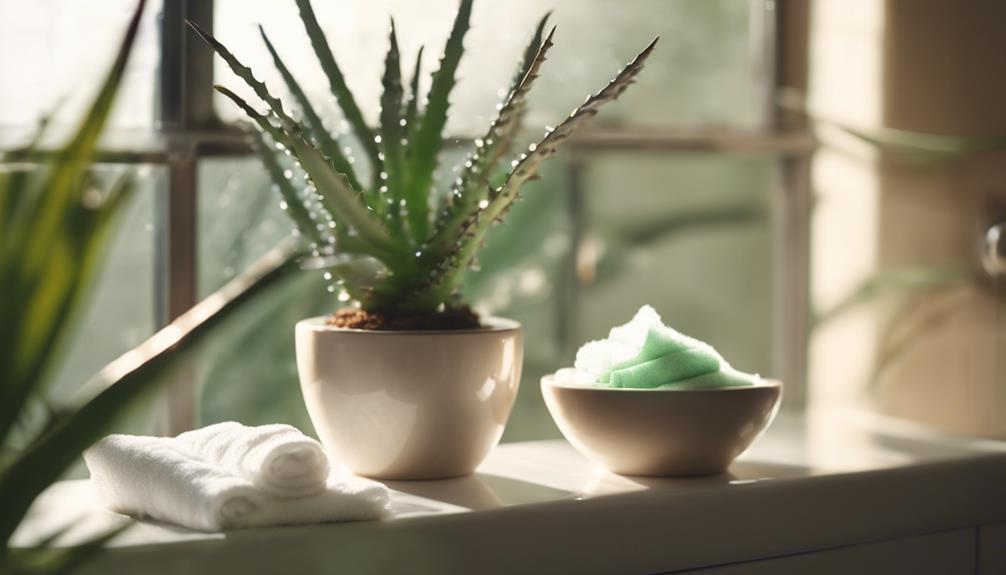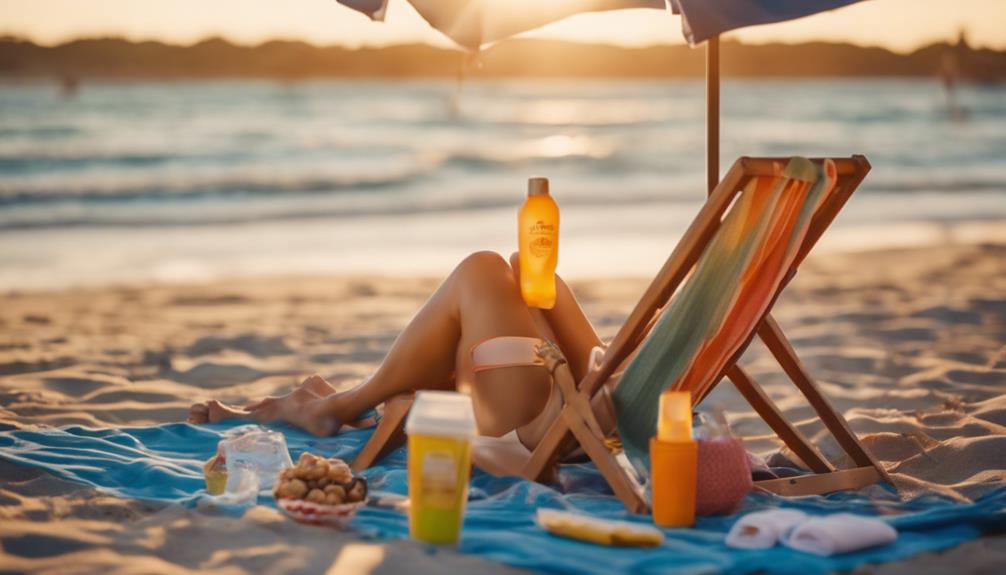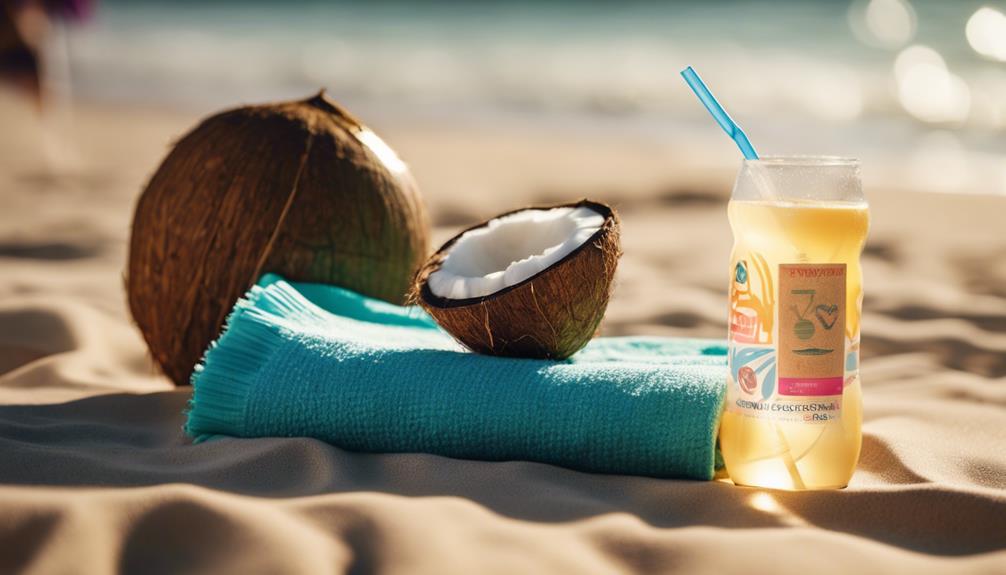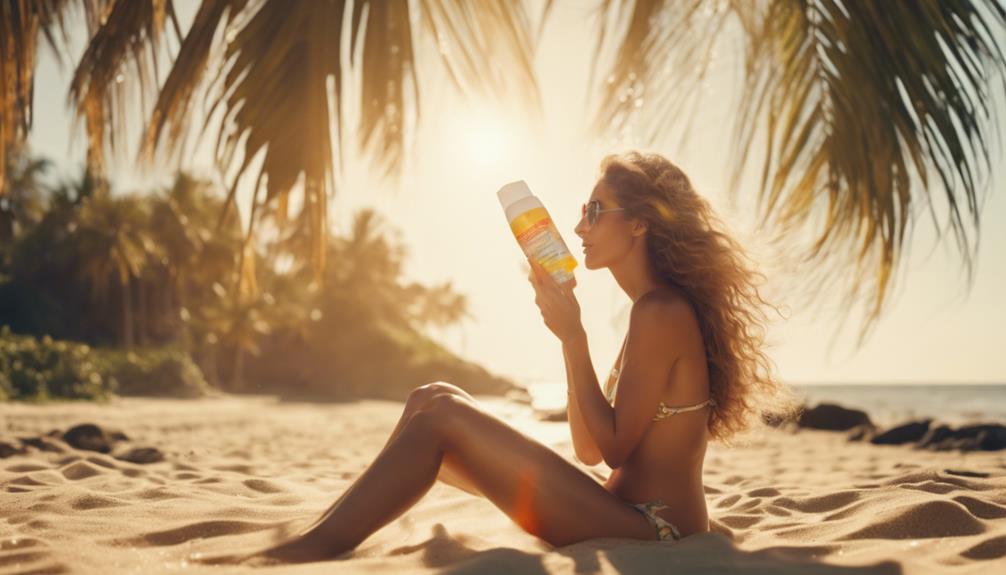Revealing the secrets to safe tanning begins with understanding your skin type for proper preparation. Prior to tanning, gently exfoliate the skin the day before and follow up with an oil-free moisturizer. When tanning, be sure to use indoor lotions that are suitable for your skin type and shield your eyes with UV goggles. It’s recommended to start with shorter tanning sessions, especially if you have fair skin, and monitor your tanning times. After tanning, apply a non-oily moisturizer to keep the skin hydrated. Remember to drink plenty of water and consider using tan extenders for longer-lasting results. Explore additional tips and tricks for achieving the perfect tan while maintaining safety and health.
Key Takeaways
- Assess your skin type and consult a professional to determine safe tanning practices tailored to your needs.
- Always wear UV protection goggles to safeguard your eyes from harmful rays during tanning sessions.
- Start with shorter tanning sessions to gauge your skin's reaction and prevent overexposure.
- Use hydrating indoor tanning lotions and apply tan-extenders to maintain moisture and prolong your tan.
Skin Assessment and Preparation
Before you start tanning, assess your skin type and consult a skincare professional to guarantee safe use of tanning beds. Knowing your skin type helps you understand how your skin reacts to UV rays.
If you're on any medications that increase sensitivity, let your dermatologist know.
To prepare your skin, exfoliate gently a day before tanning using a sea sponge or exfoliating mitt. This assures an even tan.
After exfoliation, apply an oil-free moisturizer to keep your skin hydrated—avoid heavy lotions that could interfere with tanning.
During your tanning sessions, pay attention to your skin's reaction. Observing how your skin responds will help you make adjustments and stay safe while achieving that sun-kissed glow.
Tanning Products and Lotions
Choosing the right tanning products and lotions is essential for achieving a safe and natural-looking tan.
Start by selecting lotions that suit your skin type and contain hydrating ingredients. Look for bronzers that match your skin tone for a seamless finish. If you're using indoor tanning lotions, prioritize those with moisture-boosting components to keep your skin nourished.
Always test a bronzer on a small area first to avoid any adverse reactions. After tanning, apply specialized tan-extender products immediately to help maintain your bronzed appearance.
Eye Protection and Safety

Protecting your eyes during tanning sessions is essential to prevent long-term damage from harmful UV rays.
Always wear goggles specifically designed for UV protection; they help shield your eyes from harmful rays that can lead to cataracts and other eye issues.
Don't skip this step, as tanning without eyewear can considerably increase your risk of eye damage.
Remember to remove contact lenses before tanning, as they can trap UV rays against your eyes.
Confirm your goggles fit properly for maximum protection and comfort.
By prioritizing eye safety now, you'll maintain your vision health for the future, allowing you to enjoy a beautiful tan without compromising your eyesight.
Stay smart, protect your eyes, and enjoy your tanning experience safely!
Tanning Session Management
Monitoring your tanning session duration is crucial to prevent overexposure to UV rays and guarantee a safe tanning experience.
Start with shorter sessions, especially if you have fair skin, and gradually increase your time based on how your skin responds. Always adhere to recommended tanning bed limits to ensure safety.
Keeping track of your tanning sessions is essential, so consider maintaining a log to avoid losing track of time. Scheduling regular sessions can help you achieve and maintain that bronzed appearance you desire.
Don't hesitate to consult salon professionals for tailored advice that fits your skin type and goals. Remember, your skin's health is paramount, so prioritize safety during each tanning session.
Post-Tan Care and Maintenance

Maintaining skin health after tanning is essential for prolonging that radiant glow and ensuring your skin stays hydrated and vibrant.
Start by applying a non-oily moisturizer immediately after your tanning session to lock in moisture and maintain an even tan. Incorporate a daily moisturizing routine, focusing on areas that tend to dry out, like your elbows and knees.
Don't forget your lips; a good SPF lip balm protects them from UV exposure. Hydration is key, so drink plenty of water to support your skin from the inside out.
For the best results, consider using tan-extenders, which help prolong your bronzed appearance while keeping your skin healthy and glowing.
Prioritize your skin's health for a long-lasting, beautiful tan.
Equipment Hygiene and Safety
Proper hygiene of tanning equipment plays a significant role in ensuring a safe and enjoyable tanning experience.
To protect yourself from germs and bacteria, always sanitize tanning beds after each use. Use disinfectant sprays or wipes on high-touch areas, like the bed surface and handles, and let them dry completely before your session.
Establish a regular cleaning schedule, especially in busy salons, to maintain a hygienic environment. Additionally, check that the facility adheres to strict cleaning protocols, as this shows their commitment to your safety.
Remember, a clean tanning bed not only enhances your experience but also minimizes the risk of skin infections and other health issues.
Prioritize equipment hygiene for the best tanning results!
Current Trends in Tanning

Tanning enthusiasts are increasingly turning to safer, innovative options that prioritize skin health while achieving that coveted glow. You might find yourself drawn to these current trends that not only enhance your tan but also protect your skin:
- Natural tanning products with organic ingredients that nourish your skin.
- Light therapy devices that offer UV-free tanning solutions.
- Customizable tanning formulas tailored to your unique skin tone.
- Water-activated bronzers that hydrate while providing a beautiful glow.
What Are the Best Practices for Safe Tanning?
When it comes to secrets to safe tanning, there are a few best practices to keep in mind. Always use sunscreen with a high SPF, limit sun exposure during peak hours, and wear protective clothing and sunglasses. Opt for self-tanning products or spray tans for a safer alternative to sunbathing.
Conclusion
In your quest for that radiant, sun-kissed glow, remember that safety is your best friend.
By understanding your skin and choosing the right products, you can embrace a beautifully bronzed look without the worries.
Protecting your eyes and maintaining proper hygiene will keep your tanning experience enjoyable and worry-free.
With a little care and attention, you can flaunt your fabulous tan while ensuring your skin stays healthy and happy.
So, glow on and shine bright!










